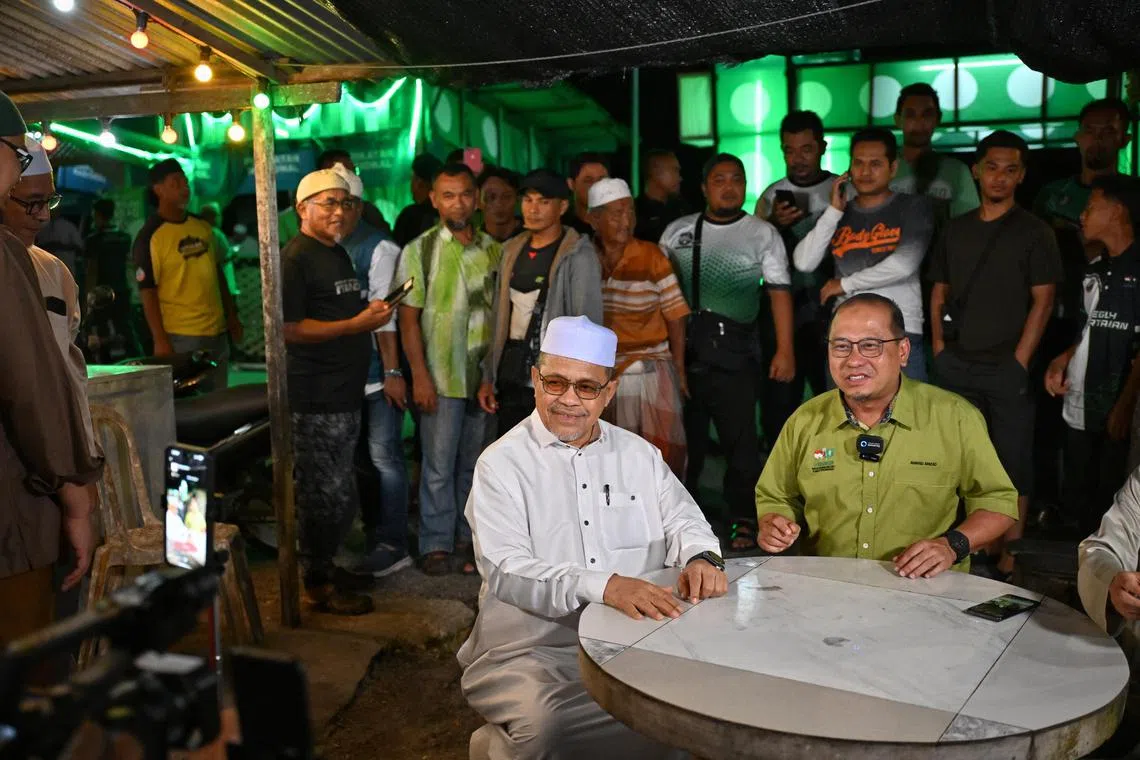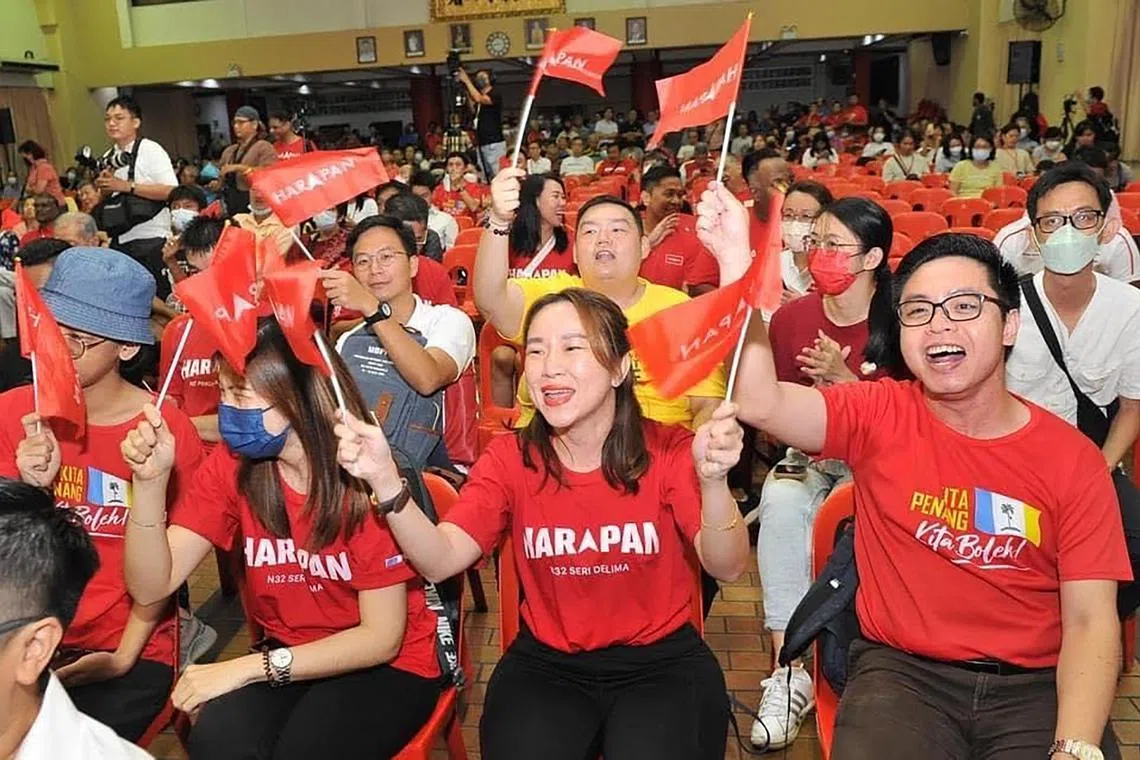Malaysia state polls: Lower turnout at rallies as campaigning shifts online
Sign up now: Get ST's newsletters delivered to your inbox

Datuk Ahmad Amzad Hashim (right) and Datuk Seri Shahidan Kassim hosting a TikTok livestream at a Perikatan Nasional event in Sungei Derhaka on Aug 6.
ST PHOTO: ARIFFIN JAMAR
Follow topic:
KUALA LUMPUR - Malaysia’s political parties are drawing far smaller crowds on the ground as they ramp up campaigning on social media platforms, making physical events less relevant as a barometer to gauge voter sentiment ahead of six state elections on Aug 12.
More than half of the 9.7 million electorate in the six state polls are below the age of 40, a demographic that is more inclined to use social media as a source of political information instead of physically attending election rallies like the generations before them.
Last Wednesday, opposition alliance Perikatan Nasional (PN) drew close to 35,000 viewers to its live TikTok broadcast of a Kedah rally which had only about 1,000 people on site. The post had more than 2 million likes and over 16,000 shares. The broadcast was watched over 240,000 times on Facebook.
Similarly, on July 29, pictures from the ruling coalition Pakatan Harapan (PH) gathering hosted by Penang Chief Minister Chow Kon Yeow in George Town showed rows of empty chairs. Mr Chow said people had opted to attend the gathering remotely via social media. The event was streamed live on Facebook and was watched 19,000 times and had 670 likes.

Rows of empty chairs seen behind Pakatan Harapan supporters in a election rally in Penang Chinese Townhall on July 29.
PHOTO: NGA KOR MING SUPER FANS/FACEBOOK
PH has also been active on TikTok, releasing short videos that are well-viewed.
Mr Ooi Kok Hin, executive director of electoral watchdog Bersih, said it is hard to gauge voters’ sentiment at rallies when people no longer show up physically. Indicators at physical rallies include the turn-out and crowds chanting a party’s slogans.
“The shares and likes can tell us the resonance of their messaging to online users and the effectiveness of the parties’ communication machinery,” he said.
But likes and shares on social media may not necessarily translate into votes at the ballot box, as some of the posts could be paid-for content aimed at reaching a wider audience, instead of posts shared with supporters, he said.
“Surveys and opinion polls are better and more useful indicators of the ground mood,” he added.
TikTok emerged as a popular social media medium
Some election candidates have engaged with social media influencers to promote their campaigns online.
Mr Ooi noted that PN appears to have had more endorsements from social media influencers who did not produce much political content during the November polls, compared with its rivals PH and its unity government ally Barisan Nasional.
“These endorsers declared support for and suggested their followers vote for PN during the campaign,” he added.
PN is even fielding social media influencer Jefri Mejan, 44, for the Ijok seat in Selangor. Mr Jefri, who is known for cooking traditional dishes using a wooden stove, has close to 198,000 and 142,000 followers on TikTok and Facebook, respectively.
PN assemblyman Hilman Idham, who is defending his Gombak Setia state seat in Selangor, told The Straits Times that engaging with social media influencers is a good strategy to amplify his election message to voters.
Mr Hilman said three TikTok influencers have contacted him for information on his campaign, as they were attracted by his unique style of using party slogans in songs that he writes himself.
Besides social media, Mr Hilman said he is also engaging with traditional outlets such as online news platforms. “On TikTok, you can’t explain every detail, but with traditional media, you can explain things in detail for the voters to understand more clearly, which is important for me. The most important thing is we must amplify our messages to the voters through every channel.”


